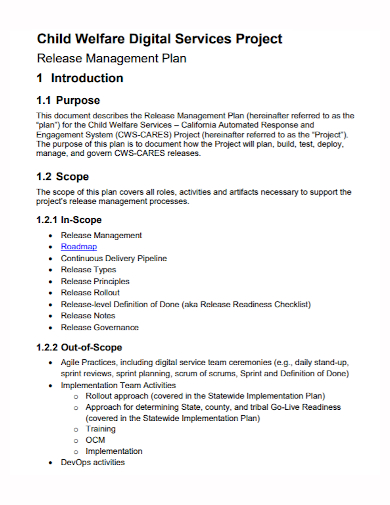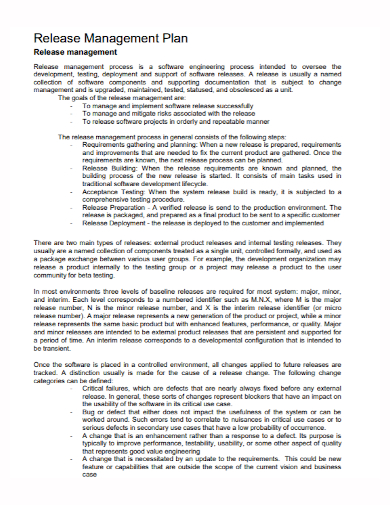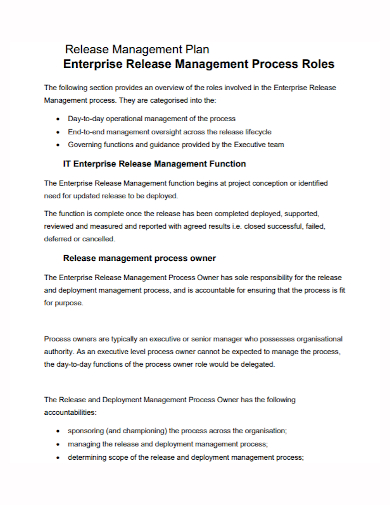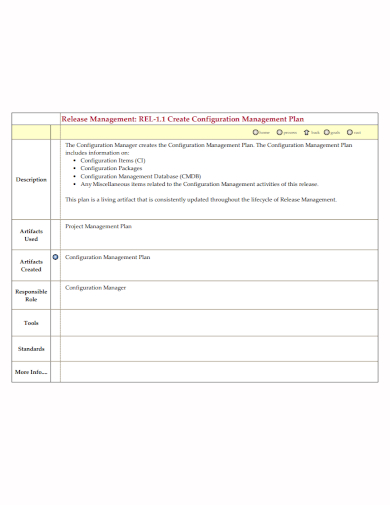If your firm has ever had to make a major software change, you understand the importance of having a solid release management procedure in place. From creation and testing to deployment, release management monitors all stages of a software release. Any time a new product or even improvements to an existing product are needed, release management is essential. You can never have too much scrutiny on your company’s Release Management process. Any flaws along the way will result in software that the end-user will disapprove of, if not outright reject. That’s why so many businesses have invested in incorporating agile elements into this critical business process. But before you do the same, let’s talk about Release Management must include and how one key tool can help you make it more agile.
What is Release Management? The process of managing software deployments and change initiatives is known as release management. It arranges important tasks (internal and external) across an organization, assigns the physical and human resources needed to do them, and oversees their completion. It all starts with deciding what will be included in a release, then managing the software build as it progresses through various phases and environments, testing stability, and finally deployment.
10+ Release Management Plan Samples
1. Release Management Plan Template
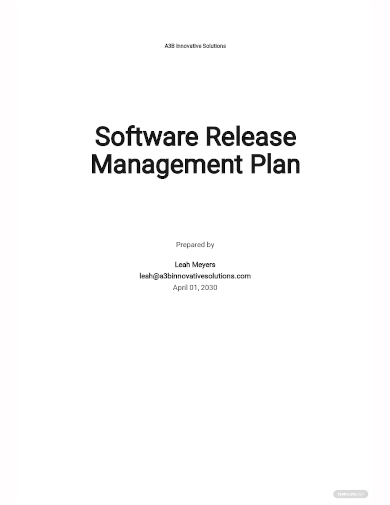
2. Configuration and Release Management Plan Template

3. Project Release Management Plan
4. Release Management Plan
5. Release Deployment Management Plan
6. Enterprise Release Management Plan
7. Release Configuration Management Plan
8. Land Release Management Plan
9. Sample Release Management Plan
10. Standard Release Management Plan
11. Release Application Management Plan
Steps to Successful Release Management Process
While release management techniques vary and should be tailored to each organization’s needs, there are five main phases to follow.
- Plan release – The planning step may take the most time because it is here that your complete release is organized from beginning to end. A well-thought-out release plan will keep your team on track and guarantee that all standards and requirements are followed. A release plan can be approached in a variety of ways. The systems development life cycle is one of the most widely used approaches for release management (SDLC). The SDLC assists software developers in efficiently planning, developing, maintaining, and replacing software systems. Other project management processes can be used in conjunction with or instead of the SDLC.
- Build release – You can begin designing and creating the product for release after the release plan is finalized. This is the actual “development” of the product based on the release plan’s requirements. It’s time to put the build through real-world scenario testing when all of the issues have been resolved. It’s possible that this will require numerous iterations. As the team completes the product, it is submitted to a testing environment (typically automatically) for user acceptability. This enables the team to spot any faults or concerns that may develop in a real-world setting.
- User acceptance testing – User acceptability testing, often known as UAT, is when the product’s intended users get to use it and provide comments. This is frequently done as a free online beta trial or with a bigger number of firm personnel. Because of the amount of data collected and fixes required to get the build to where it needs to be for the official launch, user acceptability testing is the most important phase in release management.
- Prepare release – This step involves putting the finishing touches on the product while keeping everything learned during UAT in mind. A final quality assessment by the QA team is also part of the release preparation process. During the review, the QA team will do final tests to confirm that the build fulfills the release plan’s minimum acceptable standards and business requirements.
- Deploy release – It’s now time to let your product loose in the wilds of live production. The deployment stage comprises messaging and product education for both the end-user and your firm as a whole, in addition to just putting the build into production. Users, for example, should be informed about the release’s modifications and how to use the new features. You may need to conduct extensive and continuous training to bring everyone up to speed, depending on how important the changes were.
FAQs
What is Release Lifecycle Management?
The concept of release lifecycle management is fairly similar. However, it encompasses a deeper understanding of the release management process. It could also include topics that aren’t immediately related to release and deployment management. Release lifecycle management, for the most part, starts when the release is given a name and continues until the term is no longer utilized.
What is the difference between change management and release management?
For the most part, your change management practices should be designed to help you move brand new initiatives and procedural changes from development to operation. The primary concern of release management is how changes move through any pre-production settings.
What does release managers do?
Release managers must possess a wide range of general abilities, including the ability to comprehend the software development process, communicate with business partners, synthesize data, and be knowledgeable about both products and projects. They must also have in-depth knowledge of management abilities, strategic decision-making, and implementation coordination.
Release management is in charge of a dynamic procedure. Every release is an opportunity to improve everything from your workflow to your checklist as your team learns which roadmaps work best for which types of launches—and which ones don’t.
Related Posts
FREE 9+ 30-Day Marketing Plan Samples in PDF | MS Word | Apple Pages | Google Docs
FREE 3+ Sales Team Action Plan Samples in PDF | MS Word | Apple Pages | Google Docs
Marketing Plan For Small Business Samples
FREE 7+ Fashion Business Plan Samples in PDF
FREE 10+ Sprint Planning Samples In MS Word | Google Docs | PDF
FREE 10+ Wedding Planning Samples in MS Word | Apple Pages | Powerpoint | PDF
FREE 9+ Monthly Study Planner Samples in PSD | Illustrator | InDesign | PDF
FREE 9+ Sample Curriculum Planning Templates in PDF | MS Word
FREE 10+ Teacher Development Plan Samples in MS Word | Google Docs | Apple Pages | PDF
FREE 10+ Basketball Practice Plan Samples in PDF
FREE 12+ School Business Plan Samples in PDF | MS Word | Apple Pages | Google Docs
FREE 7+ Client Strategic Plan Samples in PDF | MS Word
FREE 11+ Trucking Business Plan Templates in PDF | MS Word | Google Docs | Pages
FREE 7+ Small Hotel Business Plan Samples PDF | MS Word | Apple Pages | Google Docs
FREE 14+ Bakery Business Plans in MS Word | PDF | Google Docs | Pages

